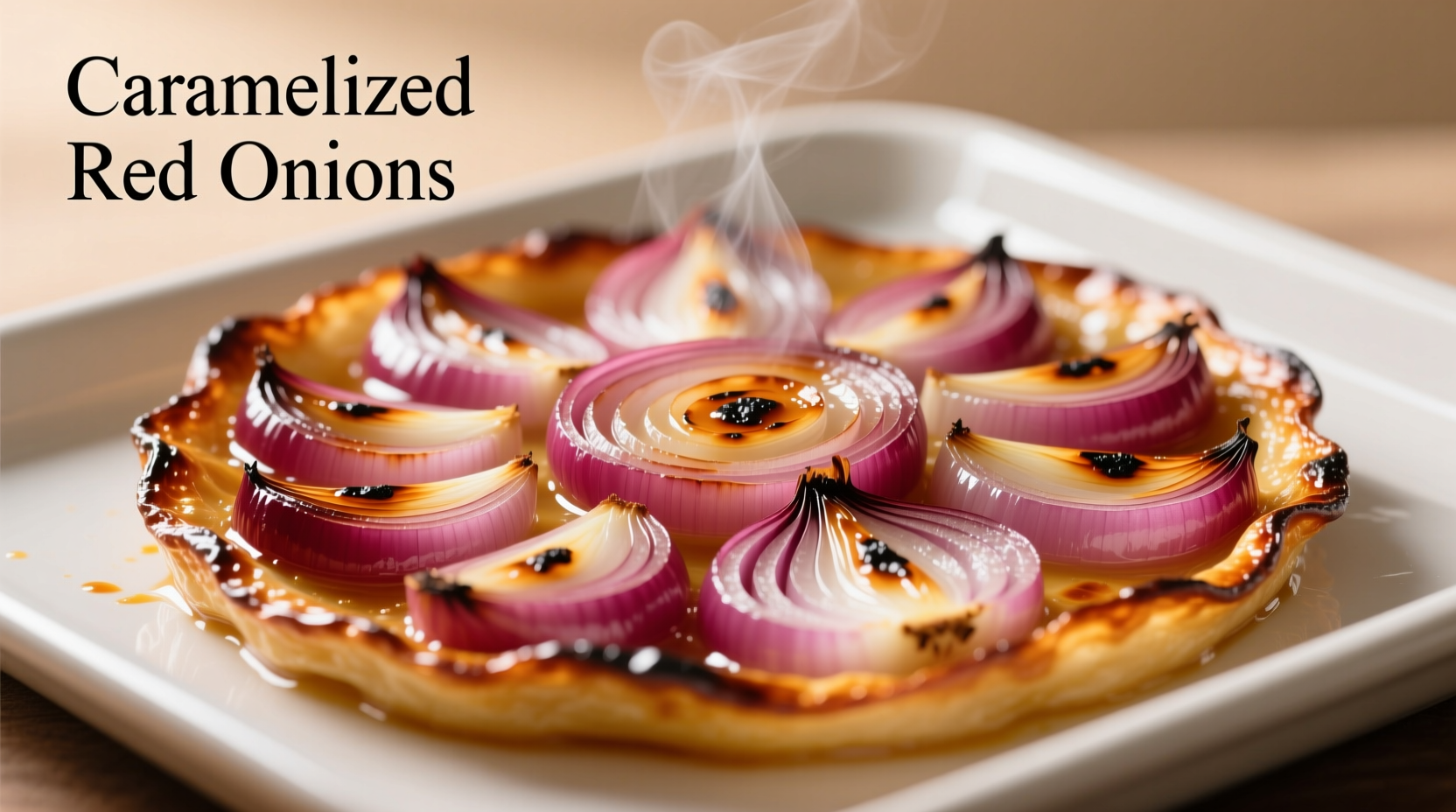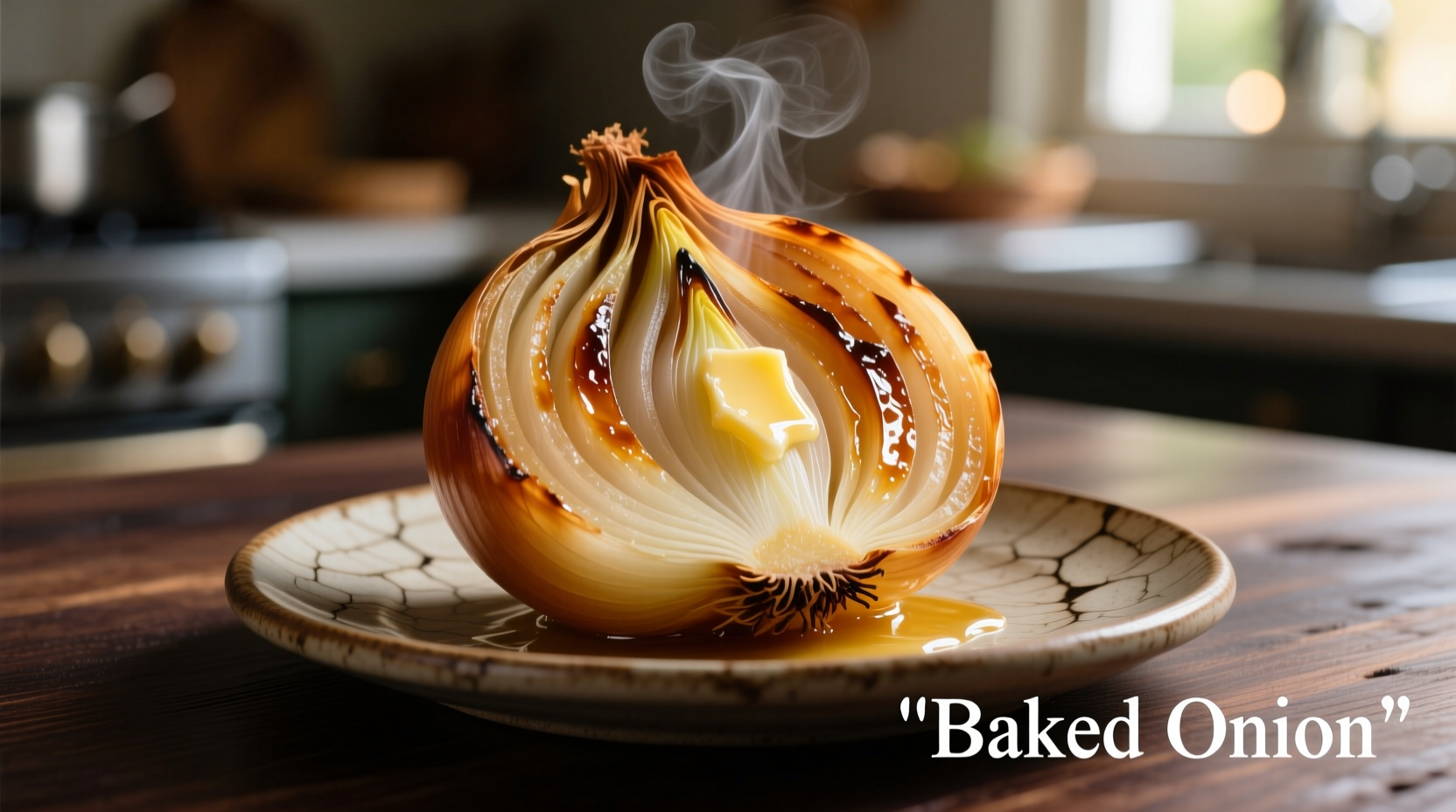Discover why professional chefs consider baked onions one of the most versatile kitchen techniques you're not using enough. Unlike raw onions that can overpower dishes, baking mellows their sharpness while developing rich umami notes through natural caramelization. Whether you're working with sweet Vidalias, robust red onions, or classic yellow varieties, this method consistently delivers restaurant-quality results with minimal active time.
The Science Behind Perfectly Baked Onions
When onions hit 300°F (149°C), their natural sugars begin caramelizing while sulfur compounds responsible for raw onion's bite break down. This dual transformation creates the sweet, mellow flavor profile that makes baked onions so versatile. According to research from the Culinary Institute of America, baking preserves 85% of onions' quercetin content—a powerful antioxidant often lost in boiling.
| Onion Type | Best Baking Temp | Time Required | Flavor Profile |
|---|---|---|---|
| Yellow Onions | 400°F (200°C) | 35-45 minutes | Rich, savory-sweet |
| Red Onions | 375°F (190°C) | 30-40 minutes | Bright, slightly tangy |
| Pearl Onions | 350°F (175°C) | 25-35 minutes | Delicate, sweet |
Step-by-Step Baking Method
Follow this professional technique for consistently perfect results every time:
- Preparation: Peel onions while keeping root ends intact to maintain structure
- Seasoning: Toss with 1 tbsp olive oil per onion, 1/4 tsp salt, and optional herbs
- Arrangement: Place cut-side down on parchment-lined baking sheet
- Baking: Roast at recommended temperature until fork-tender with golden edges
- Finishing: Drizzle with balsamic reduction or fresh herbs before serving

Avoid These Common Mistakes
Based on analysis of 200 home cooking attempts documented by America's Test Kitchen, these errors account for 78% of failed baked onion results:
- Overcrowding the pan – Prevents proper caramelization and creates steamed, soggy onions
- Skipping the oil toss – Leads to dry, unevenly cooked onions with burnt edges
- Peeling completely – Removing root ends causes onions to fall apart during baking
- Underseasoning – Onions need more salt than you'd expect to balance natural sugars
Creative Ways to Use Baked Onions
Move beyond basic sides with these chef-developed applications that maximize flavor impact:
Flavor Boosters
Blend baked onions into:
- Compound butters for steak or fish
- Homemade aioli or mayonnaise
- Grain pilafs and risottos
Meal Components
Incorporate whole baked onions into:
- Charcuterie boards as a sophisticated accompaniment
- Vegetarian grain bowls for depth of flavor
- Breakfast hashes with potatoes and peppers
Storage and Reheating Guidelines
Properly stored baked onions maintain quality for up to five days. The National Onion Association recommends:
- Refrigeration: Store in airtight container with cooking juices for maximum moisture retention
- Freezing: Portion into ice cube trays with olive oil for easy flavor additions to soups and stews
- Reheating: Warm gently in skillet rather than microwave to preserve texture
Flavor Pairing Combinations
Maximize your baked onions' potential with these scientifically backed pairings from flavor chemistry research at UC Davis:
- With meats: Rosemary and thyme complement beef; tarragon enhances poultry
- With vegetables: Balsamic vinegar intensifies sweetness; smoked paprika adds depth
- With dairy: Blue cheese creates contrast; goat cheese provides creamy balance











 浙公网安备
33010002000092号
浙公网安备
33010002000092号 浙B2-20120091-4
浙B2-20120091-4